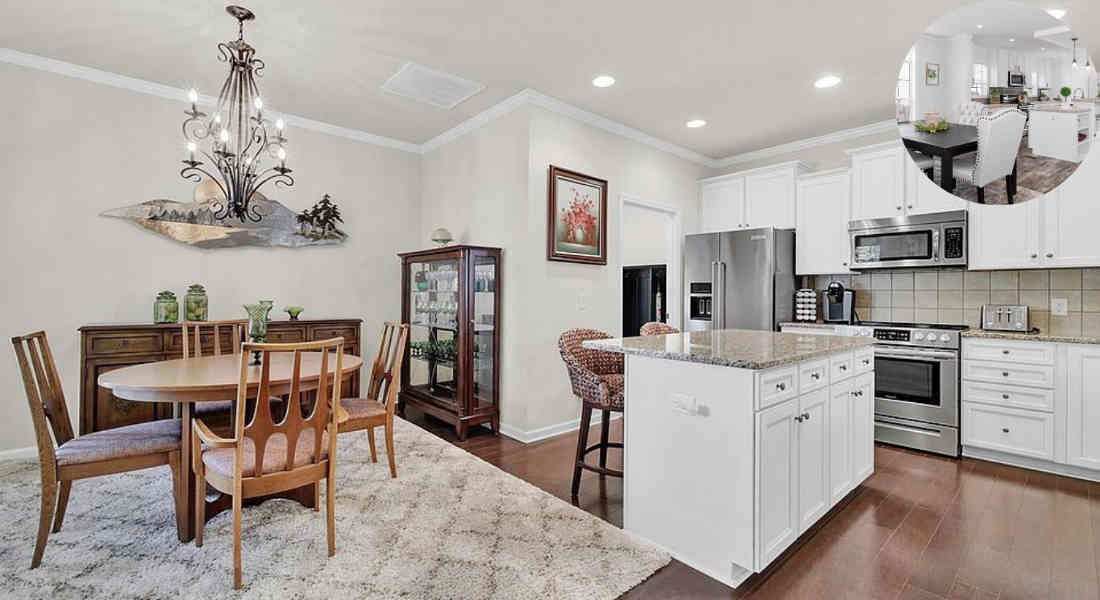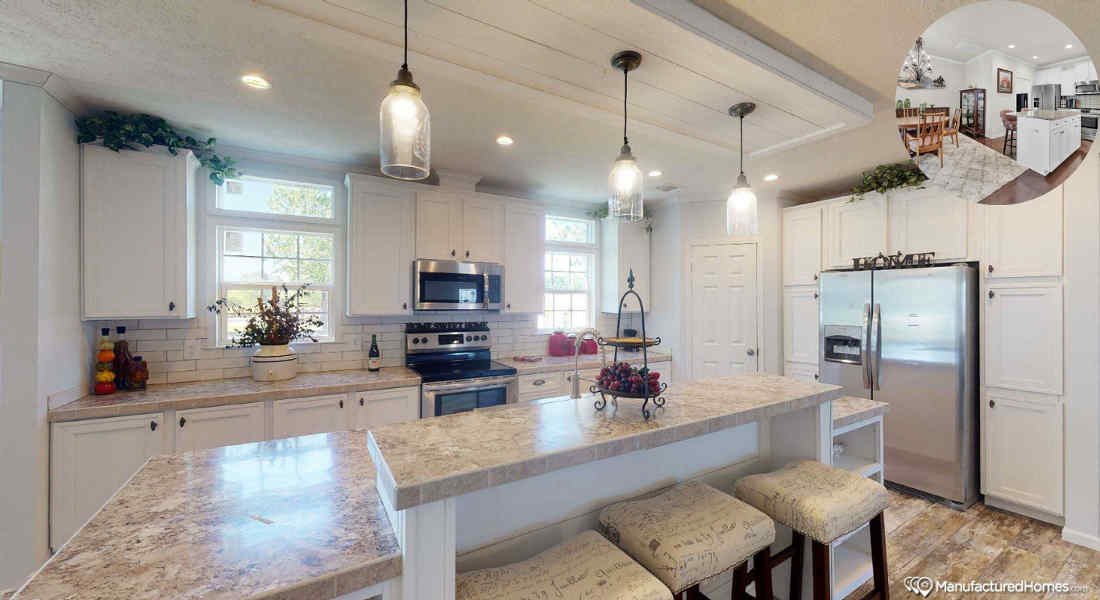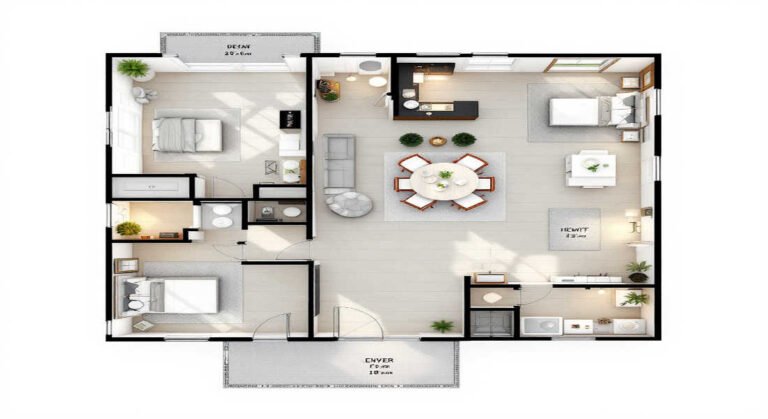When it comes to designing or renovating a kitchen, there are countless elements that homeowners and renovators need to consider. From cabinetry and countertops to lighting and flooring, every detail contributes to the functionality and aesthetics of the space. Among these often-overlooked details is the kitchen soffit, a feature that plays a surprising role in many homes.
What Is a Soffit in the Home Kitchen?
Kitchen soffits, also known as bulkheads, are box-like structures typically located above your kitchen cabinets. These features extend from the top of the cabinets to the Ceiling, creating a transition between the two. While soffits are often dismissed as decorative or outdated, they serve an important function in many homes.
Common Locations and Appearances
Soffits are most commonly found in kitchens with traditional or mid-century designs. They are constructed using materials like drywall, wood, or even stainless steel, depending on the kitchen’s overall aesthetic.
Why Do They Exist?
Soffits aren’t just there for looks—they often hide essential mechanical components like ductwork, pipes, wiring, or vents, which are critical for the operation of your home. Think of them as a functional disguise for the less attractive parts of your kitchen infrastructure.
The Purpose of Kitchen Soffits
Soffits may not always catch your attention, but they serve key purposes in the design and functionality of your kitchen. Let’s break it down:
You may also read (tighten my home kitchen faucet).
Concealing Mechanical Components
One of the primary purposes of a soffit is to hide plumbing, ductwork, electrical wiring, and other structural elements. Without soffits, these components would be exposed, making the kitchen look unfinished or cluttered.
Creating a Seamless Look
Soffits help bridge the gap between cabinets and ceilings, especially in kitchens with high ceilings. They offer a more cohesive and polished appearance, ensuring that the room feels well-designed.
Preventing Dust Accumulation
Without soffits, the space above cabinets becomes a magnet for dust and debris. By filling this gap, soffits reduce the cleaning workload and maintain better kitchen hygiene.
Enhancing Aesthetics
Soffits can also be designed to complement the kitchen’s style. Whether painted to match cabinets or adorned with crown molding, they can add a decorative element to the space.
The History and Evolution of Kitchen Soffits
Origins in Mid-Century Homes
Soffits became popular in the mid-20th century when homes were being built with lower ceilings and compact designs. The feature was initially a practical solution to hide pipes and wiring in kitchens.
Changing Trends
As kitchen designs evolved, so did the use of soffits. Through the decades, they shifted from being a necessity to a design choice. Modern kitchens often avoid soffits entirely, favoring open spaces and taller cabinets.
Current Attitudes
Today, soffits are seen as either a functional feature or an outdated element, depending on the kitchen’s style. While some homeowners embrace them, others prefer to remove or modernize them for a cleaner look.
What Is Behind a Kitchen Soffit?
If you’re considering removing or updating a soffit, it’s crucial to understand what’s hiding behind it.
Common Hidden Features
Here are some of the elements that might be concealed within your soffit:
- Electrical wiring
- Plumbing pipes
- HVAC ductwork
- Vents or exhaust systems
How to Inspect a Soffit
Before making any changes, it’s essential to inspect the soffit safely. You can start by consulting your house plans or hiring a professional to check if it contains any critical utilities.
Pro Tip: Never attempt to remove a soffit without first understanding what’s inside. Doing so without proper planning could result in costly repairs or damage to your home.
Pros and Cons of Kitchen Soffits
Like any design feature, kitchen soffits come with their own set of advantages and disadvantages. Let’s weigh them out:
Pros
- Effective Concealment: Soffits hide unsightly mechanical elements like wires and pipes.
- Finished Look: They provide a seamless visual transition between cabinets and ceilings.
- Dust Prevention: Soffits eliminate hard-to-reach areas that collect dirt and debris.
- Additional Storage: In some cases, soffits can be designed to include extra storage compartments.
Cons
- Outdated Aesthetics: Some homeowners consider soffits bulky or old-fashioned.
- Limited Storage Space: Soffits reduce the vertical space available for cabinets.
- Potential Maintenance Issues: Older soffits may require repairs or updates if they begin to deteriorate.
Aspect Pros Cons
Functionality Hides mechanical components Reduces available storage space
Aesthetics Creates a finished appearance Can look outdated in modern designs
Maintenance Lowers dust accumulation May require renovations in older homes
Design Alternatives to Traditional Soffits
If you’re not a fan of soffits, there are plenty of alternatives to consider:
Extending Cabinets to the Ceiling
Maximize storage and eliminate the need for soffits by choosing taller cabinets that reach the Ceiling.
Open Shelving or Decorative Trim
Open shelving can create a modern, airy look, while decorative trim or crown molding adds a touch of elegance.
Incorporating Lighting
Use the soffit area for recessed or accent lighting to enhance the ambiance of your kitchen.
Removing Soffits
For a completely open and contemporary feel, consider removing the soffits altogether. Keep in mind that this may require professional remodeling.
Should You Remove or Keep Your Kitchen Soffit?
Deciding whether to keep or remove your soffit depends on several factors:
When to Remove
- The soffit is empty or doesn’t serve any functional purpose.
- You want to achieve a more modern, open design.
- You’re ready to invest in a professional remodel.
When to Keep
- The soffit contains essential utilities like pipes or wiring.
- You prefer a traditional or transitional kitchen style.
- Removing it would be too costly or complex.
Consideration: Consult a contractor or designer to assess your soffit before making a decision.
Creative Ideas for Updating Kitchen Soffits
If you decide to keep your soffits, there are plenty of ways to modernize them:
- Paint Them: Match the soffit to your cabinets for a cohesive look, or use a contrasting color for a bold statement.
- Add Molding: Crown molding or trim can elevate the appearance of your soffits.
- Integrate Lighting: Use the soffit space for recessed or under-cabinet lighting.
- Use as Display Space: Install shelves or glass-front cabinets in the soffit area for added functionality and style.
You may also read (secrets of a chefs house kitchen).
